
|
SUMMARY:
You’re burning marketing dollars by getting one thing wrong: relevance. Your personalization is broken if it stops at just filling in a first name field. Here’s how brands tapped into customer interest to turn relevance into revenue. Read on to see how they used data, storytelling, and user-centered design to be relevant to the customer. |
Action Box: Learn how to build custom AI
Our next masterclass is How to take a conversion marketing approach to Agentic AI and RAG. Discover actionable techniques to create custom AI that can help your marketing, assist your customers, and generate leads and revenue – no technical skills required. Join us on February 12th at 2 pm EST (from MarketingSherpa’s parent organization, MeclabsAI).
Volkswagen Group of America is a wholly owned subsidiary of Volkswagen AG. It houses the U.S. operations of Audi, Bentley, Lamborghini, and Volkswagen and is the sole importer and distributer of Bugatti and Rimac vehicles in the U.S.
This case study focuses on after sales for the Volkswagen brand in the United States specifically – authorized service and maintenance with genuine parts and accessories.
Volkswagen dealers had two choices: rely on broad, impersonal national campaigns or fund hyper-local ads that lacked scale. The result? Seasonal mismatches, wasted spend, and lost revenue.
“The national approach wasn’t addressing the seasonal and geographical challenges we were having when marketing our top commodities (oil, tires, batteries, brakes, and filters). It also wasn’t something we would abandon; we saw an opportunity to bridge the gap between what we were already doing at the national level and what dealers were doing in their own markets with their own dollars,” said TJ Dolliver, National Parts & Service Marketing Manager, Volkswagen of America.
Instead of fighting the same marketing battles alone, Volkswagen dealers joined forces—pooling budgets and data to create regionally relevant, omnichannel campaigns.
“Showing seasonal-relevant imagery (no snow in Florida in December) had a huge impact on the engagement with the marketing materials (click-through rates and coupon redemptions for example),” said Chris Rucker, Group Direct, Client Leads, Notorious 111(Volkswagen of America’s creative agency of record).
The dealers also pooled data capabilities in the groups, allowing the team to send marketing messages that are specific to the customer, the vehicle, the vehicle mileage, recently declined services and open recalls/bulletins, all down to the specific VIN (vehicle identification number).
“VW is a data-driven client, so we lean heavily on data captured in the dealership at the point of sale and also from the data fed through the Car-Net® system in the actual VW vehicles,” he said.
API feeds allowed the team to use real-time data – like when a dashboard indicator light is active and requires service or a tow. The team can then deliver a personalized email to the customer within an hour of the event being stored in the vehicle’s ECU (engine control unit) highlighting the upcoming maintenance/service need, along with corresponding offers and dealers.
The creative team had to be aware of the data feeds as well, to allow space for the personalized messaging. “The data and presentation of vehicle names, customer names, and dealer names can be inconsistent in their length and how they are input,” Rucker explained.
Precision-targeted promotions and timely messages led to a 6.67% response rate – resulting in 21,000 repair orders from 300,000 messages sent to customers.
FlightHub is a Canadian OTA and a subsidiary of Momentum Ventures, a travel technology company. The team sought to complement its existing efforts with initiatives that would engage audiences on a deeper, more emotional level, starting with the 2024 holiday season.
FlightHub knew transactional marketing wasn’t enough. The team needed a way to emotionally connect with their audience – or risk getting lost in the OTA sea.
They conducted a survey of 2,005 Canadians, both native born and immigrants, to better understand the unique challenges immigrants face during the holidays and inform its ‘Where Travel Finds You’ campaign. “We believe that effective campaigns start with a deep understanding of the people they aim to serve,” said Ayoub Hissar, Director of PR and Marketing Strategy, FlightHub.
The core message of the campaign: that travel is more than a journey to a destination – it’s a way to connect people to what truly matters.
The team interviewed four immigrants and created a mini-documentary-style video (four minutes and 38 seconds) with their personal stories of navigating challenges and finding resilience in event the hardest times. A team of five – including a videographer, an assistant videographer, and three members from the FlightHub marketing team – spent eight hours filming interviews and 25 hours filming the participants’ surprise experiences, like a luxury weekend start in the Vogue Hotel Presidential Suite, complemented by chauffeur service in a Mercedes S-Class S580E.
“Our survey revealed the emotional and logistical barriers they face, and this campaign was an opportunity to elevate their voices and share their resilience,” said Jade Rozal, Communications Manager, FlightHub.
The documentary was posted on YouTube, with clips shared on Instagram, Facebook, X, LinkedIn, TikTok, which all led to a landing page. Approximately 100 hours was invested to create and launch the page, from initial wireframes to live deployment.
Creative Sample #1: Travel agency campaign landing page

The audience was invited to nominate someone whose journey inspires them for a chance to win an all-expenses-paid trip for two to Mexico. The prize includes round-trip airfare and a four-night stay at an all-inclusive resort, providing an escape to relax and reconnect.
The team also launched a paid boosting campaign and spent $5,000 on YouTube ads targeting the keywords: family, family trip, travel, immigration, immigrant story.
They spent another $1,000 on Instagram and Facebook ads targeting frequent travelers, immigrants, and users who have shown interest in holiday or family content.
“From interactive Instagram stories to YouTube ads, every piece was carefully designed to reflect the campaign’s message while evoking genuine emotion,” said Sandra Belbekri, Social Media and PR Specialist, FlightHub.
I asked the team to break down what worked best and worst from this campaign to give you ideas for your own campaign.
The mini-documentary video achieved 1,300 views in less than 24 hours prior to the start of paid boosting efforts. Following targeted boosting efforts, the video garnered 23,000 views, showcasing its wide appeal and reach.
Magnolia is a digital experience platform. So when the time came to rebrand, the pressure was on. “We can’t tell our customers all the cool things our product can do if we can’t execute them ourselves, using our own product,” Anthony Poliseno, Chief Marketing Officer, Magnolia.
Here’s how they did it, and what they learned. To make this (already long) article manageable, we’ll focus on the homepage header update. But note that the same approach was used across all aspects of the website.
Here’s a look at the company’s homepage before the rebrand.
Creative Sample #2: Homepage before

The team analyzed the homepage, and noted these problems:
The team had three months to execute the rebrand, with six months to show compelling benchmarks to the board. The execution team consisted of five employees across brand, development, and demand generation, and one external graphic designer for support. Over a period of 85 days, they rolled out the new brand design on all digital assets and deployed a targeted SEO strategy to match.
Here is the homepage after the rebrand.
Creative Sample #3: Homepage after

The homepage’s original headline focused on a pain point – ‘Take “complicated” out of digital experience platforms.’ “By focusing on generic pain points, we weren't able to stand out,” said Jamie Bolland, VP of Product Marketing, Magnolia. The new headlines focused on the outcome – “Turn complex content into incredible digital experiences.”
The original body copy was:
Managing digital experiences across brands, markets, and channels is complicated. Our platform makes it simple with a power combo of:
The team reduced the bulleted text in favor of a simple, one-sentence tagline – ‘With Magnolia you can unify your content, customer data and legacy tech to build engaging websites, portals and apps at scale.’
Several tests showed that concise body copy performed better, but it still needed enough key terms and insights to attract attention. “Body copy that's too long will bore and overwhelm people, but body copy that's too short and doesn't include the key terms won't attract people's attention,” advised Vanessa Dietz, Marketing Manager, Magnolia.
The original homepage had two CTAs – ‘See our platform’ and ‘Schedule your demo.’ One button was black, the other white. “Whilst it can be tempting to give customers options with their CTAs, more is not always better,” said Lara Vermont, VP of Demand Generation, Magnolia.
The team went with a single CTA for the new homepage – ‘Get a demo with one of our Experts.’ Research into their target ICP showed a strong preference for blue in those business' own brands, so the team went with a bright blue CTA button.
The team also believes that button clicks were supported better by the new color palette that housed them. Every major CTA button not only changed to blue but had specific colors and textures in the section it lived in, which probably encouraged more action.
Before redesigning the header, the team tested images on LinkedIn and found that people alongside technology performed better than product shots alone. So, the new header design prominently featured faces alongside simple product artifacts to humanize the technology.
“It's tough to sell a software interface because it’s so complicated for the eye and brain to process. But also, tech (as cool as it is) will never compare to the humans that use it. So we stripped our product down to single portraits of users, graphic elements, and simple text boxes so when visitors come to our site, they see themselves in the story of our technology,” said Andrew Conlon, Creative Director, Magnolia
This wasn’t just a homepage tweak – it was a revenue engine overhaul. With a 68,567% ROI and a $10.3M sales pipeline increase, Magnolia proved that clarity in messaging isn’t just branding – it’s business strategy
The bounce rate and average engagement time held relatively steady”
But returning users increased from 26,389 over the previous six months to 38,000, a 44% increase.
Contact sales requests increased from 124 to 210, a 70% increase. Magnolia’s typical client is a global enterprise with an average contract value of $120,000, so the team estimates a $10.3 million increase in sales pipeline.
Given that they spent $15,000 (of their $50,000 budget) on the rebrand, the team calculated a 68,567% ROI.
I asked the ‘Copywriter – Blog Posts’ expert in MeclabsAI (MarketingSherpa’s parent company) for ideas on how you can put the concepts discussed in this article into action:
This article was distributed through the MarketingSherpa email newsletter.
Marketing Relevance Case Studies: Right offer, right time, right person
Copywriting and Value Proposition: Unleashing the power of compelling copy
Accelerating Lead Capture: Four psychological keys that transform conversion rates
Get Better Business Results With a Skillfully Applied Customer-first Marketing Strategy

The customer-first approach of MarketingSherpa’s agency services can help you build the most effective strategy to serve customers and improve results, and then implement it across every customer touchpoint.
Get More Info >MECLABS AI
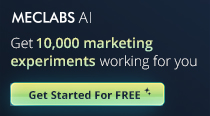
Get headlines, value prop, competitive analysis, and more.
Use the AI for FREE (for now) >Marketer Vs Machine
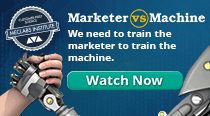
Marketer Vs Machine: We need to train the marketer to train the machine.
Watch Now >Live, Interactive Event

Join Flint McGlaughlin for Design Your Offer on May 22nd at 1 pm ET. You’ll learn proven strategies that drive real business results.
Get Your Scholarship >Free Marketing Course
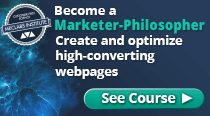
Become a Marketer-Philosopher: Create and optimize high-converting webpages (with this free online marketing course)
See Course >Project and Ideas Pitch Template
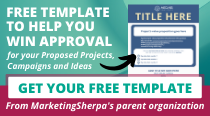
A free template to help you win approval for your proposed projects and campaigns
Get the Template >Six Quick CTA checklists
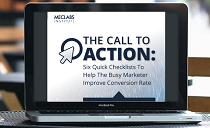
These CTA checklists are specifically designed for your team — something practical to hold up against your CTAs to help the time-pressed marketer quickly consider the customer psychology of your “asks” and how you can improve them.
Get the Checklists >Infographic: How to Create a Model of Your Customer’s Mind
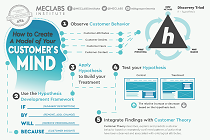
You need a repeatable methodology focused on building your organization’s customer wisdom throughout your campaigns and websites. This infographic can get you started.
Get the Infographic >Infographic: 21 Psychological Elements that Power Effective Web Design
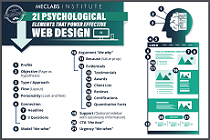
To build an effective page from scratch, you need to begin with the psychology of your customer. This infographic can get you started.
Get the Infographic >Receive the latest case studies and data on email, lead gen, and social media along with MarketingSherpa updates and promotions.